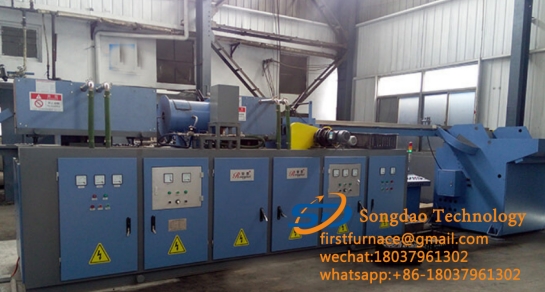- 08
- Apr
What aspects should be paid attention to when quenching cast iron induction heating furnace?
What aspects should be paid attention to when quenching cast iron induction heating furnace?
Among all kinds of cast iron, the induction heating furnace quenching of gray cast iron is the most difficult. The quenching of gray cast iron induction heating furnace is similar to steel, and the quenching equipment used is also similar. The following differences should be noted:
The heating time is longer than that of steel parts. Generally, it should be more than a few seconds and should be kept for a period of time so that the insoluble structure can be dissolved into austenite. If the heating speed is too fast, it will cause excessive thermal stress and cracks.
The heating temperature should not be too high, the upper limit is 950℃, generally 900~930℃, different grades have an optimal temperature, when the heating temperature reaches 950℃, phosphorus eutectic will appear on the surface of the part, and there will be coarse retained austenite .
3) In order to make the temperature slowly transition from the surface to the core, it is best not to quench immediately after heating, and pre-cooling for 0.5 ~ 2s is best.
4) Induction heating furnace quenching of iron castings generally uses polymer aqueous solution or oil as the quenching cooling medium, and some parts such as the cylinder liner are directly quenched with water as the quenching cooling medium, and the valve seat of the cylinder body is quenched by self-cooling.
5) After the gray iron castings are quenched in the induction heating furnace, low temperature tempering should be carried out in order to eliminate the stress. For example, the cylinder liner should be tempered at power frequency
The matrix of ferritic malleable cast iron is ferrite and graphitic carbon. In order to dissolve carbon in austenite, it is necessary to increase the heating temperature (1050℃) and extend the heating time (up to 1min or more), so as to make a small part Graphite carbon is dissolved in austenite, and higher surface hardness can be obtained after quenching.

